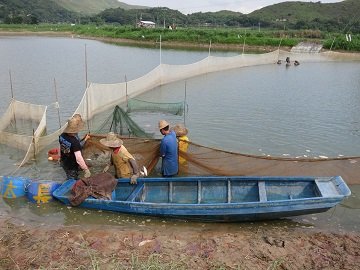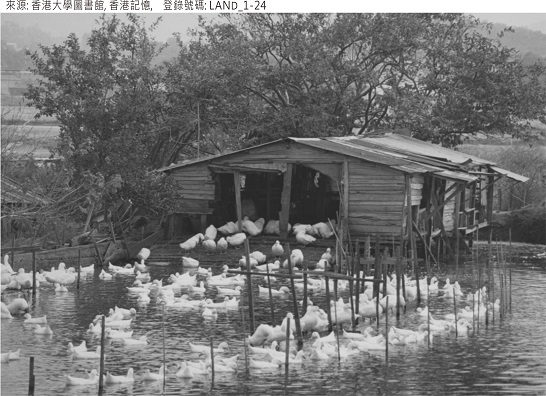
|
Before the 1940s |
As early as the 1930s, villagers around Shan Pui Tsuen in Yuen Long began to build fishponds to raise a variety of fish. Along the shore of Deep Bay, in Ha Tsuen, Tin Shui Wai, San Tin, Lok Ma Chau, Shap Pat Heung and Nam Sang Wai, fishponds of different sizes abounded. Before 1940, the total area of fishponds in Hong Kong was 100 ha[1]. |
|
1940s-1950s Due to the wave of immigration after the end of the Second Chinese Civil war (1949-1952), the number and area of fishponds started to increase |
The rapid increase in population led to shortage in food supply. With rising demand for freshwater fish, both the number and total area of fishponds increased. |
|
1960 - 1970s |
Continued increase in population led to rapid increase in the demand of freshwater fish. Also, water pollution in the Deep Bay area and the destruction of mangrove at the estuary of the Pearl River led to reduce profit for tradition Gei Wai. The shortage of marine fish supply indirectly caused people to switch to freshwater fish. Fish farmers restructured the Gei Wai into fishponds to rear grey mullet, grass carp, silver carp, common carp, mud carp, tilapia and big head carp. |
|
1970 - 1980s Both fishpond area and freshwater fish production peaked in the period |
The area of fishponds reached 2,255 ha in 1971. Annual production reached 2,000 tonnes[3]. In 1982, the total fishpond area was 1,800 ha and annual production reached 7,000 tonnes[4]. |
|
1980 – 2010s Decline in fishpond area began |
Causes of the decline: - Many fishponds were filled up and converted into container yards, outdoor storage facilities and housing lots. - Imports from mainland China caused a significant drop in local fish price while costs increased continuously, leading to a drastic decrease in profit for pond fish culture. - Aging of the fishery industry as the younger generation was reluctant to enter the industry. |
|
In recent years |
As demand for freshwater fish increases in the mainland, the supply of freshwater fish to Hong Kong decreases, leading to rising freshwater fish price. In 2016, the area of fishponds was about 1,135 ha, with an annual production of 2,534 tonnes[4]. Most fishponds adopt polyculture. Fish reared include grass carp, big head carp, grey mullet, tilapia, silver carp, common carp and mud carp. For better profit, some ponds along the sea shore were converted to marine culture, for fish such as spotted scat, sea bream, snubnose pompano and giant grouper. The fish farmers still face the problems of cost increase and labour shortage. |
*A hectare (ha) is about the size of a standard soccer field (9,750 m2)
Statistics relating to pond fish culture in north-west New Territories
For more in depth information about the history of fresh water pond fish culture in Hong Kong and stories about the life of fish farmers, click here to learn about the oral history of the fish farmers.


References:
- 漁翁移山:香港本土漁業民俗誌 張展鴻
- 米埔自然保護區的經營管理 林務局
- Hong Kong 1983, Census and Statistics Department
- Pond Fish Culture, website of the Agriculture, Fisheries and Conservation Department
- HONG KONG 1961, Hong Kong Government Press
- HONG KONG 1971, Hong Kong Government Press
- 香港水產業現況及可持續發展潛力報告書 陳德全
- AFCD Departmental Annual Reports



